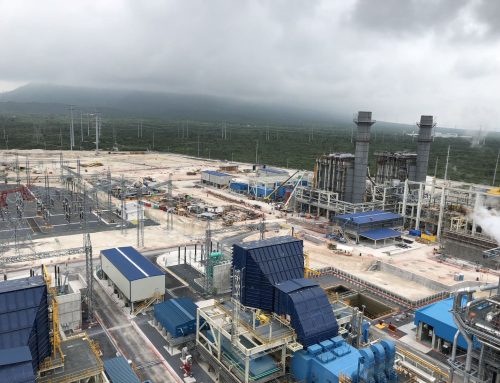To understand the purpose of Thermal Performance Testing (TPT) in Power Generation, it is important to define it. Performance testing is the evaluation of the condition of a system and its capacity to effectively execute a certain process, relevant to this article: a thermal process, also known as heat-cycle. Therefore, Thermal Performance Testing in Power Generation is the evaluation of how effective the thermal process is to generate electrical power.
The reasons for conducting performance tests of power plants are the following:
1. Contractual:
Demonstrating contractual compliance for a new or upgraded system
2. Diagnosing performance shortfall:
To identify the causes of the shortfall
3. Monitoring/measuring performance over time:
Measuring plant and equipment degradation for evaluation of financial investments
4. Mandatory requirements from the grid regulators:
Measurements and reporting of key parameters for management of the electrical grid and compensation from clients
For all these test reasons, it is necessary to ensure test accuracy, reliability, and repeatability. Therefore, it is important to understand how a proper test program must be implemented.
Performance testing standards
Performance testing methods of power generation plants are documented by 2 major organizations that develop process standards: The American Society of Mechanical Engineers (ASME) and the International Standards Organization (ISO). In general, ASME standards are used in the americas while ISO standards are used in Europe and Africa. The rest of the world will use a combination of both, depending on the parties involved.
Described in their respective test codes, the three main results of TPT for power generation equipment and systems are: electrical power output, heat rate or thermal efficiency, and heat input. This is computed for total plants but, of course, each element of the the power generation system can be isolated and be tested on its own.
Thermal performance testing is a holistic process which includes test preparation, test execution and reporting and interpretation of the results. The process scope and complexity is tailored to the test objective and requirements.
Test planning and procedure
TPT preparation/planning is the most time-consuming part of the process for testing and with good reason since it is here that all goals must be presented, measurement methods must be established and calculation processes must be approved. If there are uncovered and/or unresolved topics, they must be finalized during this part of the process.
During planning, a test procedure must be elaborated to communicate the objectives of the test, the preparations and arrangements needed for TPT, the methodology used to calculate the performance parameters, required data to be collected according to the methodology, define high accuracy instruments required to achieve the test uncertain level and any additional agreement not defined in contracts or guiding performance testing codes. The test procedure is the document that will dictate the process used to measure and calculate the test final results.
Additionally, the test procedure details the TPT execution phase and what needs to be addressed before the official test, here we are talking about, but not limited to, overall cleanliness of the block regardless of the technology, approved documentation (i.e. test procedure, agreed methodology, limitations, etc.), cycle isolation, process valves alignment, operation of ancillary system that might represent a consumption of auxiliary loads, etc.…
Test execution
The actual TPT execution phase must be preceded by completion of a list of prerequisites for preparation of the power generation block. Any and all cleaning process must be completed and inspected by the performance specialist. All calibration records must be produced and approved prior to the beginning of the test. The test leader will instruct the operations team to put the plant in test mode at a specific load with the proper equipment online. The specialist will confirm that all electronic trends are created and function properly. All manual data collection must also be verified. It is useful to conduct a trial test run to ensure that all of the procedure requirements are applied and the test system functions adequately.
Once the test lead is satisfied that all of the systems are ready for the test the team must ensure the plant is operating in a stable condition. ASME/ISO test codes will define the acceptable variations in operations that qualify the test conditions “stable”. Stability is extremely important as it affects directly the test uncertainty and eliminates all transitional effects of the thermal system. Stability criteria include internal parameters such as gas turbine internal wheelspace temperatures, which reflect the thermal expansion rate of the GT, or external, like ambient temperature, which affects the power output of the gas turbine. Different criteria become relevant for different technologies. For example inlet air temperature is very important for a Gt or an air-cooled -condenser but not so much for a coal boiler or an internal combustion engine. The test lead will declare when stability is acceptable.
When stability criteria are acceptable then the lead announces the start of the test. Data collection begins and test conditions are monitored to ensure integrity of the data. The performance specialist will ensure that all conditions remain acceptable and that the test system is functioning well: the system under test is operating as required and the data collection sensors are reporting accurate data. The test lead can halt the test at any time when is required. The test can then be re-started once the fault is corrected.
The test is completed when the allocated time is expired. The test lead will review the data and, once satisfied, will give control back to the plant operators. All raw data will be distributed to all parties witness to the test. This is a crucial part of testing to ensure transparency of the resutls. Everyone must start from the same dataset.
Test reporting
The reporting of the results can be as extensive as required by the entity conducting the TPT. It should, however, adhere to as a general layout. It should include:
1. An executive summary:
Include general information such as information about the system under test, state the objectives of the test, date and time of testing, enumerate the parties involved, a summary of the results and outstanding findings that must be fixed immediately.
2. Introduction:
Describe detailed information of the test, obligations, guaranteed values, recall all agreements between parties, state the director of testing and the name of the representatives of each party present during the test.
3. Body of the report:
Include the method of testing and the operating conditions of the power generation block. The format of the general performance equation(s) that is/are used according with the TPT objectives, as well as the correction methodology.
The report will describe, in detail, where the process has differed from the agreed upon procedure. This includes the differences in preparations for test, amount and type of instrumentation used to collect data, execution of test and calculations.
Methodology used to determine the final results. This section will also include the evaluation of the test leader of the effect of these discrepancies on the results.
4. Conclusions:
All findings must be addressed in detail in this section, as well as the resolution of such findings. Also, recommendations for future testing should be included.
5. Appendices:
Information that serves as support evidence of the testing process. This includes: Detailed calculations: an example of detailed calculations is required to ensure validation of the calculations by all parties involved.
Calibration certificates of all primary instrumentation used during testing.
Printout of data collected.
Test operation logs manual data collection sheets.
Fuel analysis results.
And any other document subject as required by the parties involved.
Thermal Performance Testing is, before and above all, a required part of all financial exercises related to the plant. Whether you decide to measure performance using an array of high precision instrumentation, which will cost a relatively high amount of money, or use existing plant instrumentation, lowering costs, depends on the requirements of the test accuracy.
This accuracy should be proportional to the level of investment: a major upgrade or measurement of possible cash bonuses or liquidated damages warrants a full code test while measurement a minor, unexpected, performance shortfall can be done using station instrumentation. Anything in between requires educated engineering judgement.
References
Rolf Kehlhofer, B. R. (2009). Combined Cycle Gas and Steam Turbine Power Plants. Tulsa, OK: PennWell Corporation.
The American Society of Mechanical Engineers. (2016). Overall Plant Performance PTC 46-2015. New York: The American Society of Mechanical Engineers.




